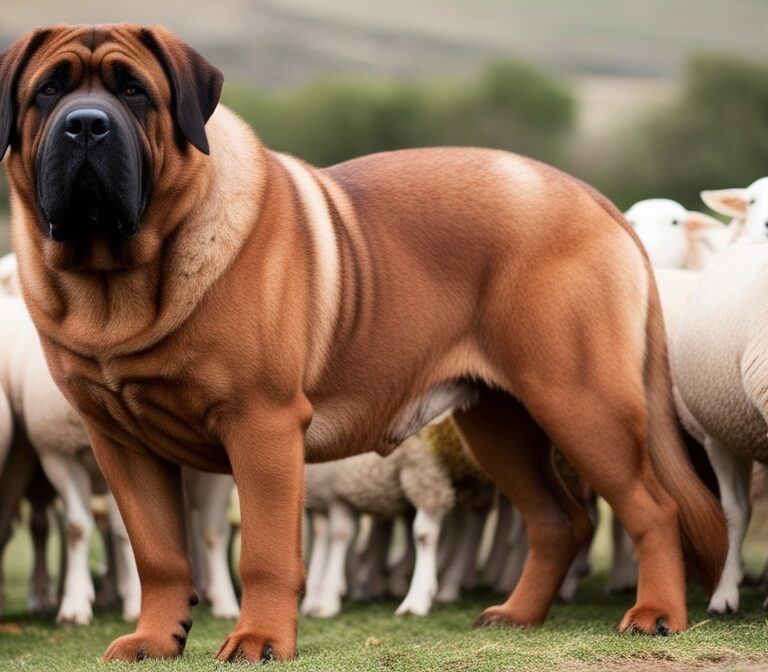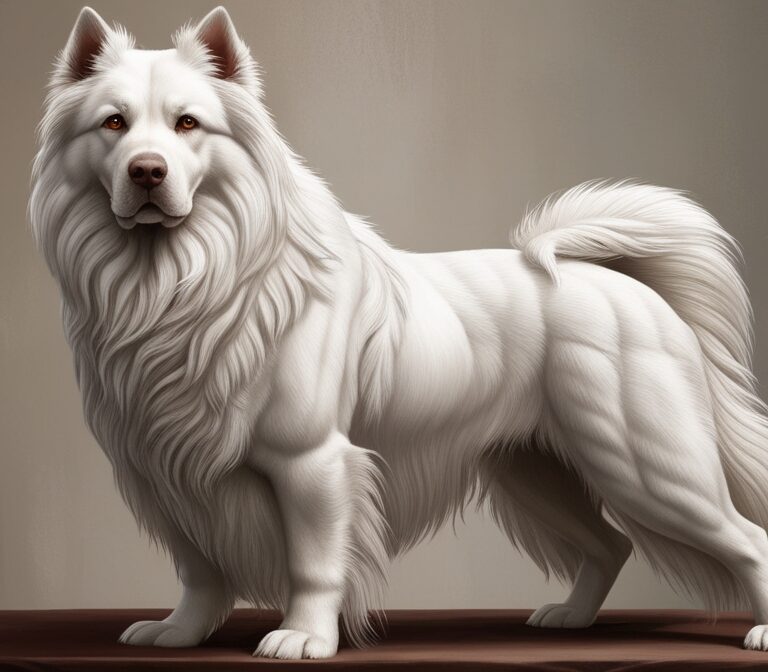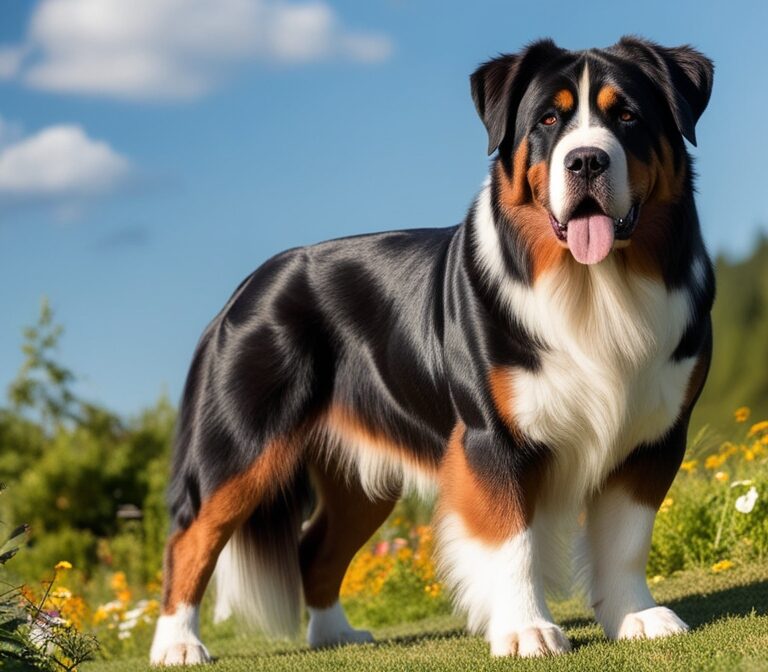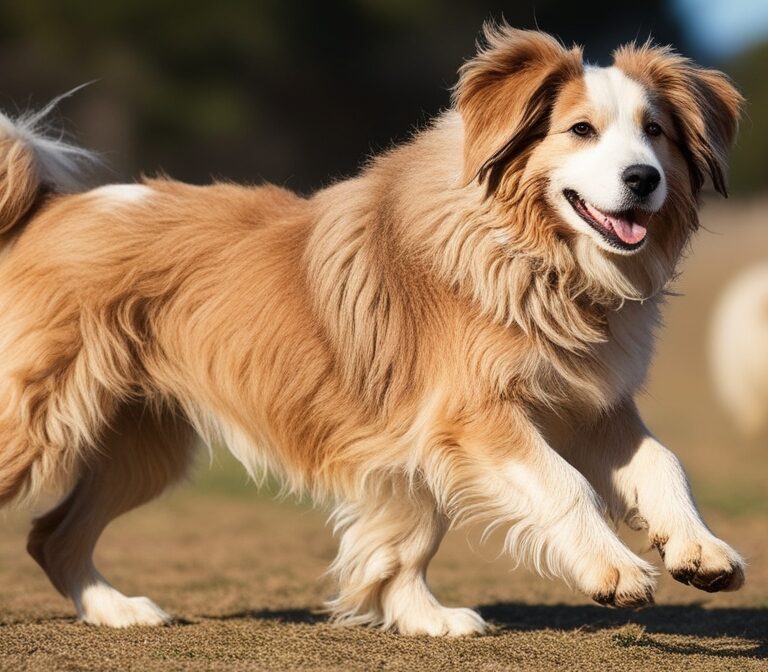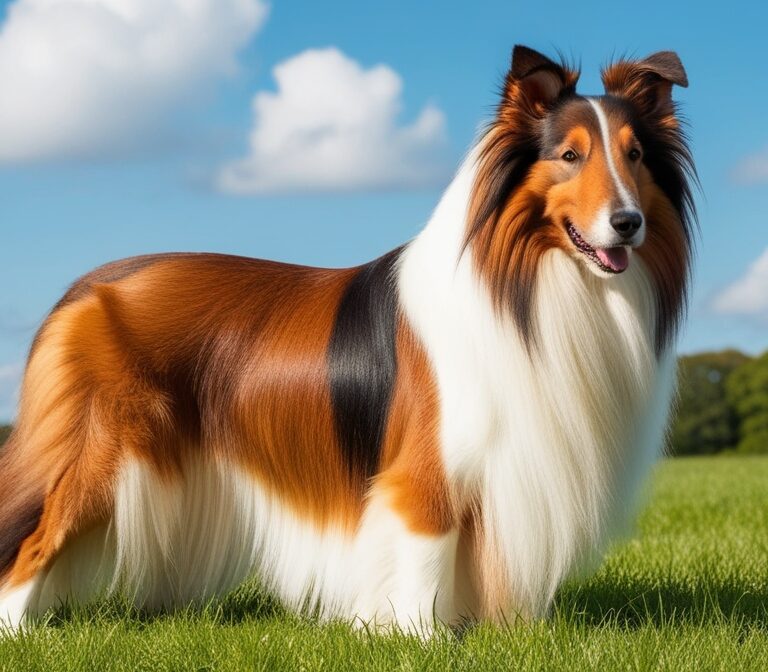Comprehensive Guide to the Tatra Shepherd Dog (Polish Tatra Sheepdog)
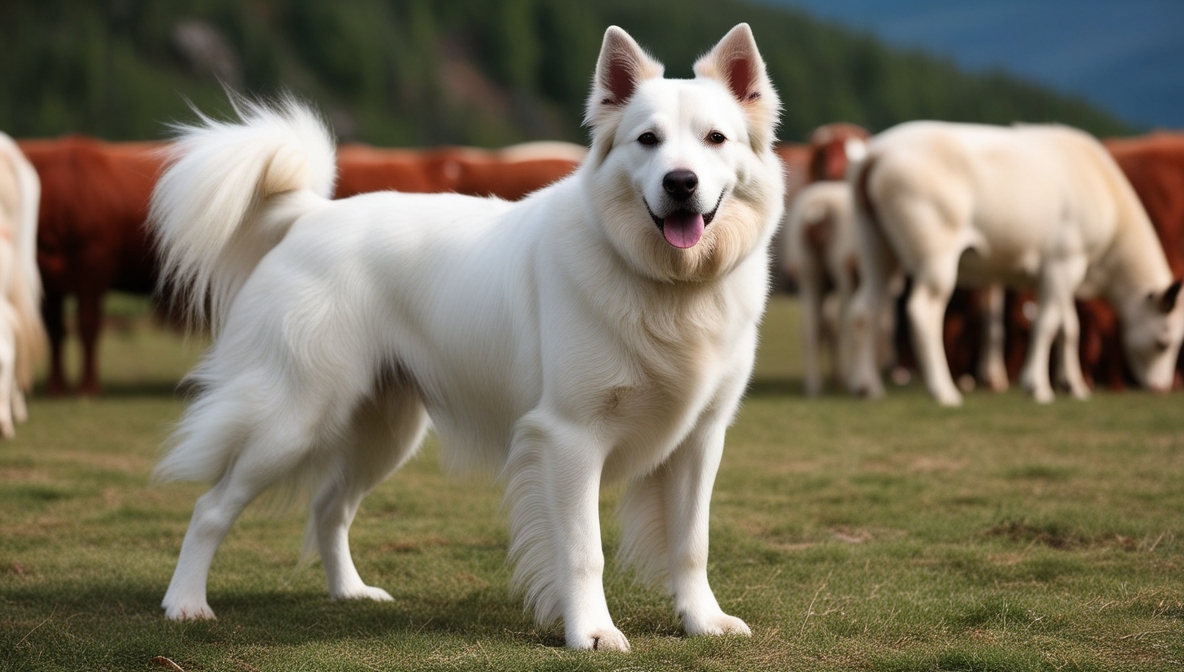
Introduction to the Tatra Shepherd Dog
The Tatra Shepherd Dog, also called the Polish Tatra Sheepdog or Owczarek Podhalański, is a majestic livestock guardian dog originating from the Tatra Mountains in Poland. This large, white-coated breed has been bred for centuries to protect sheep and cattle from predators such as wolves and bears. Recognized by the Fédération Cynologique Internationale (FCI) as a member of Group 1 (Sheepdogs and Cattle Dogs), the Tatra Shepherd Dog stands out for its intelligence, loyalty, and calm confidence.
Dog enthusiasts often compare the Tatra Shepherd Dog to similar mountain guardian breeds such as the Great Pyrenees, Kuvasz, and Maremma Sheepdog. However, its Polish heritage, protective instincts, and adaptability give it unique characteristics that appeal to farmers, families, and working dog lovers alike.
In modern times, this breed is valued not only for its working ability but also as a devoted companion and watchdog. It thrives in rural and farm settings where it can roam freely, but with proper training and exercise, it can adapt to family life as well.
Origin and History of the Breed
Development in the Tatra Mountains
The Tatra Shepherd Dog traces its origins to the Podhale region of southern Poland, specifically the Tatra Mountains, where it was developed by shepherds to guard flocks. Its ancestry is believed to date back over 500 years, with connections to large white guardian dogs spread across Europe and Asia.
Role in Traditional Polish Shepherd Life
In traditional Polish society, sheep farming was central to mountain life. Shepherds needed a strong, fearless dog capable of defending livestock from wolves, bears, and thieves. The Tatra Shepherd Dog fulfilled this role with unmatched courage and independence, often making decisions without direct human instruction.
Recognition by FCI and Global Kennel Clubs
The FCI officially recognized the breed in 1967, classifying it as a livestock guardian. In Poland, it remains a symbol of national pride. Although less common outside its homeland, organizations such as the United Kennel Club (UKC) and rare-breed registries in the U.S. acknowledge its importance. Today, it is increasingly popular among enthusiasts of ancient working breeds who value its resilience and noble temperament.
Geographic and Cultural Significance
Native Region: Podhale and the Tatra Mountains
The Podhale region, part of the Carpathian range, is characterized by rugged terrain, cold winters, and predator threats — an environment that shaped the Tatra Shepherd Dog’s physical endurance and protective instincts.
Importance in Polish Heritage
The breed is celebrated in Polish folklore, songs, and traditions. Known as a guardian of both sheep and homes, it symbolizes loyalty and resilience. Farmers and shepherds continue to rely on this dog in rural areas, keeping alive centuries-old traditions of pastoral life in Poland.
Comparison to Other European Mountain Dogs
While similar to the Great Pyrenees in appearance, the Tatra Shepherd Dog is more independent and reserved, reflecting its adaptation to the cultural and environmental conditions of Poland. Compared to the Kuvasz of Hungary, it tends to be calmer and less reactive, making it an excellent choice for families in addition to its working role.
Physical Characteristics
Size and Weight Standards
The Tatra Shepherd Dog is a large breed, with males typically standing 65–70 cm (25–28 inches) tall at the shoulder and weighing 40–60 kg (88–132 lbs). Females are slightly smaller, averaging 60–65 cm (23–26 inches) in height and 35–50 kg (77–110 lbs) in weight.
Coat Type and Color
Its most distinctive feature is the dense white double coat — a thick undercoat that insulates against extreme cold and a coarse outer layer that repels dirt and moisture. The coat is always pure white, symbolizing purity and visibility among sheep flocks.
Distinctive Appearance Features
The breed has a broad head, strong muzzle, almond-shaped dark eyes, and triangular ears. Its muscular build, deep chest, and powerful stance reflect its working heritage, while its plumed tail adds elegance. Despite its size, it moves with a balanced and agile gait, well-suited for mountainous terrain.
Temperament and Personality
Loyalty and Bond with Families
The Tatra Shepherd Dog is renowned for its deep loyalty. It forms strong bonds with its family, often displaying protective affection toward children. Owners describe it as gentle, calm, and watchful indoors, yet alert and commanding outdoors.
Protective and Guardian Instincts
As a livestock guardian dog (LGD), it naturally exhibits strong protective instincts. It does not bark excessively but reacts decisively when it perceives a threat. This makes it an excellent watchdog and deterrent against intruders, whether for flocks or family homes.
Compatibility with Children and Other Pets
With early socialization, the Tatra Shepherd Dog can live harmoniously with other pets and children. It is tolerant of rough play but requires supervision due to its size and strength. Its protective nature means it may be wary of strangers, emphasizing the importance of consistent training and positive exposure.
Role as a Livestock Guardian Dog
The Tatra Shepherd Dog belongs to the category of livestock guardian dogs (LGDs), a group of working breeds developed over centuries to protect flocks from predators. Unlike herding dogs, which move and control livestock, LGDs like the Tatra are bred to live among the animals they guard and act as constant protectors.
Natural Instincts in Protecting Flocks
From an early age, Tatra puppies are often raised alongside sheep or cattle to imprint on the herd. This early exposure develops an instinctive bond with livestock, leading the dog to treat them as part of its family. Unlike breeds trained to attack intruders, the Tatra Shepherd Dog primarily uses deterrence: its size, bark, and presence are often enough to keep predators like wolves, foxes, and bears at bay.
Traditional Use by Shepherds
For centuries, Polish shepherds relied on the Tatra as their first line of defense. When wolves approached flocks in the Tatra Mountains, the dog would patrol the perimeter, barking warnings before engaging if necessary. These instincts remain strong today, making the breed an excellent choice for modern farmers who face predator threats.
Comparison with Great Pyrenees and Kuvasz
The Great Pyrenees of France and Spain, the Kuvasz of Hungary, and the Maremma Sheepdog of Italy share similar roles. However, the Tatra is considered more reserved and independent, reflecting its rugged mountain environment. It balances courage with intelligence, rarely attacking unnecessarily but always maintaining control of its territory.
Training the Tatra Shepherd Dog
Training a Tatra Shepherd Dog requires patience, consistency, and understanding of its guardian instincts. Unlike breeds bred for obedience trials, the Tatra is independent-minded, meaning it evaluates commands rather than blindly obeying them.
Importance of Early Socialization
Socialization must begin early — ideally by 8 to 12 weeks of age. Exposure to different people, animals, sounds, and environments ensures that the dog grows up confident rather than overly wary. Without socialization, it may become excessively protective or territorial.
Training Challenges and Solutions
Because of its strong will, the Tatra Shepherd Dog may resist repetitive obedience drills. Owners should use positive reinforcement techniques such as treats, praise, and play rather than harsh corrections. Consistency is key; once the dog understands its place in the family structure, it becomes a trustworthy protector.
Obedience and Working Skills
Basic obedience commands like sit, stay, recall, and heel are essential for safety, particularly given the breed’s size. Beyond obedience, Tatras excel at working tasks: boundary training for farms, patrolling property, and even search and rescue in mountainous terrain. Their intelligence means they respond well to mentally stimulating tasks, especially those that mirror their guardian role.
Exercise Needs and Activity Levels
The Tatra Shepherd Dog is not a high-energy dog like a Border Collie, but it does require moderate daily exercise to stay fit, balanced, and mentally satisfied.
Daily Exercise Requirements
An adult Tatra needs 60–90 minutes of activity daily, divided into walks, play, and free-roaming if possible. On farms or rural properties, it will naturally exercise by patrolling the land and checking boundaries. In suburban homes, structured activities such as long walks or hikes are essential.
Mental Stimulation Activities
Being an intelligent working breed, the Tatra requires mental challenges as much as physical ones. Puzzle toys, obedience training, and supervised guarding tasks help prevent boredom. Without enough stimulation, it may develop unwanted behaviors such as digging, excessive barking, or stubbornness.
Ideal Living Conditions
This breed thrives in spacious environments with access to outdoor areas. A fenced yard or farmland is preferable, as confinement in small apartments may lead to frustration. However, with the right exercise routine and responsible ownership, even families in suburban homes can successfully raise a Tatra Shepherd Dog.
Grooming and Coat Maintenance
The Tatra Shepherd Dog’s coat is one of its most striking features but also requires consistent care. Its double coat protects against extreme cold but sheds heavily, particularly during spring and autumn.
Brushing and Shedding Management
Weekly brushing is necessary year-round, but during shedding seasons, daily brushing helps remove loose undercoat and prevents matting. A slicker brush, undercoat rake, and metal comb are effective tools for managing the breed’s dense fur.
Bathing and Seasonal Care
Tatras do not require frequent baths; every 8–10 weeks is sufficient unless the dog becomes dirty. Over-bathing can strip the natural oils from its coat. Seasonal grooming is important — in winter, the undercoat thickens, while in summer, shedding increases to allow better heat regulation.
Coat Care During Different Seasons
In snowy climates, the outer coat repels moisture and dirt, keeping the dog relatively clean. In warmer regions, extra attention to hydration and shade is needed, as the thick coat can make the dog prone to overheating. Grooming not only improves appearance but also strengthens the bond between dog and owner.
Diet and Nutrition
A large, active dog like the Tatra Shepherd Dog requires a carefully planned diet to support its bone health, muscle development, and overall well-being.
Large Breed Nutritional Requirements
Tatras thrive on high-protein, moderate-fat diets that support muscle and joint development. Large breeds are prone to hip dysplasia and joint issues, so a diet enriched with glucosamine, chondroitin, and omega-3 fatty acids helps maintain mobility.
Feeding Schedules for Puppies vs Adults
Puppies require 3–4 meals daily to prevent rapid growth that could strain developing bones. From 12 months onward, adult dogs typically eat 2 meals daily, with portion sizes adjusted based on activity level and weight.
Supplements for Joint and Bone Health
Supplements such as fish oil, probiotics, and joint-support chews are commonly recommended for Tatras, especially in older age. Fresh water must always be available, and treats should be kept moderate to prevent obesity, which can worsen joint problems.
A balanced, veterinarian-approved diet is the foundation of a long, healthy life for this breed.
Conclusion:
The Tatra Shepherd Dog is more than just a strikingly beautiful white-coated guardian; it is a breed with centuries of history, cultural importance, and unwavering loyalty. Originating in the Tatra Mountains of Poland, this dog was shaped by harsh climates, demanding shepherd life, and the constant presence of predators. As a result, it remains one of the most trustworthy livestock guardian dogs (LGDs) and family protectors in the world.
For potential owners, the question isn’t whether this breed is impressive — it clearly is — but whether it is the right fit for their lifestyle. The Tatra Shepherd Dog thrives in spacious, rural, or farm environments where it can perform its natural duty of watching over property, livestock, or family members. It is not a breed for sedentary owners or those living in small apartments, as it requires daily exercise, space, and mental stimulation to remain balanced and content.
From a personality standpoint, the Tatra excels as a calm, loyal, and affectionate companion. It bonds deeply with its family, often showing protective affection toward children while maintaining a natural wariness of strangers. This makes it both a loving family dog and a reliable deterrent against intruders. However, its independence and strong will mean that training and early socialization are essential. Owners must approach the breed with patience, consistency, and respect for its guardian instincts.
In terms of care, the thick double coat requires regular grooming, especially during shedding seasons, and its large size demands proper nutrition and preventive health care to avoid joint issues. While ownership costs can be higher than those of smaller, less demanding breeds, the rewards are immense: a devoted companion, an intelligent worker, and a symbol of Polish heritage.
In conclusion, the Tatra Shepherd Dog is an ideal choice for experienced dog owners seeking a guardian breed with deep cultural roots, natural protective instincts, and a balanced temperament. For farmers, homesteaders, and families in need of a vigilant protector and affectionate companion, the Tatra offers the best of both worlds. However, for those unable to provide space, exercise, and structured guidance, this breed may prove too demanding.
If you are ready for the commitment, the Tatra Shepherd Dog will reward you with loyalty, courage, and companionship that lasts a lifetime — a true reflection of its centuries-old role as the guardian of the Tatra Mountains and protector of those it loves most.

